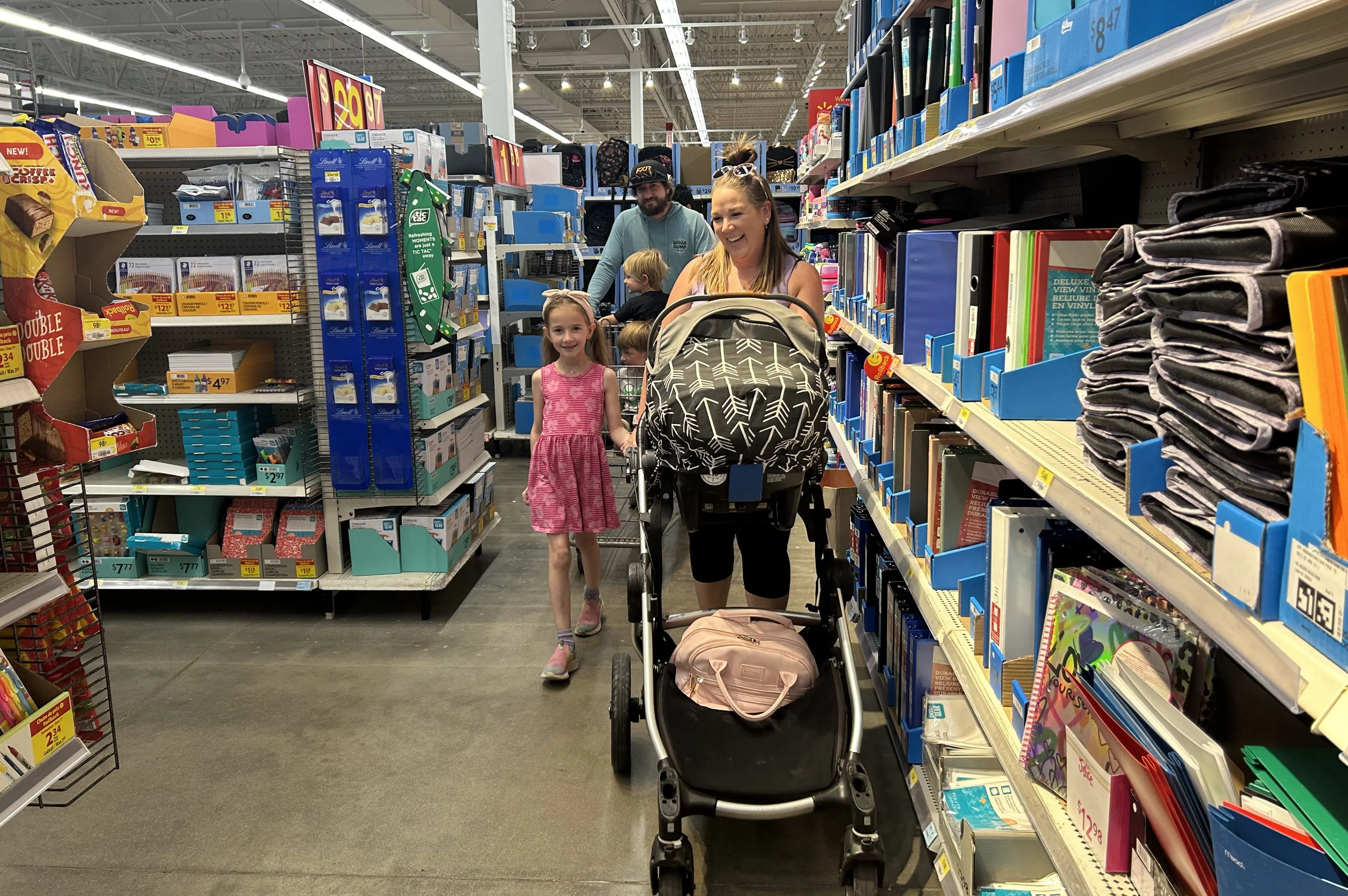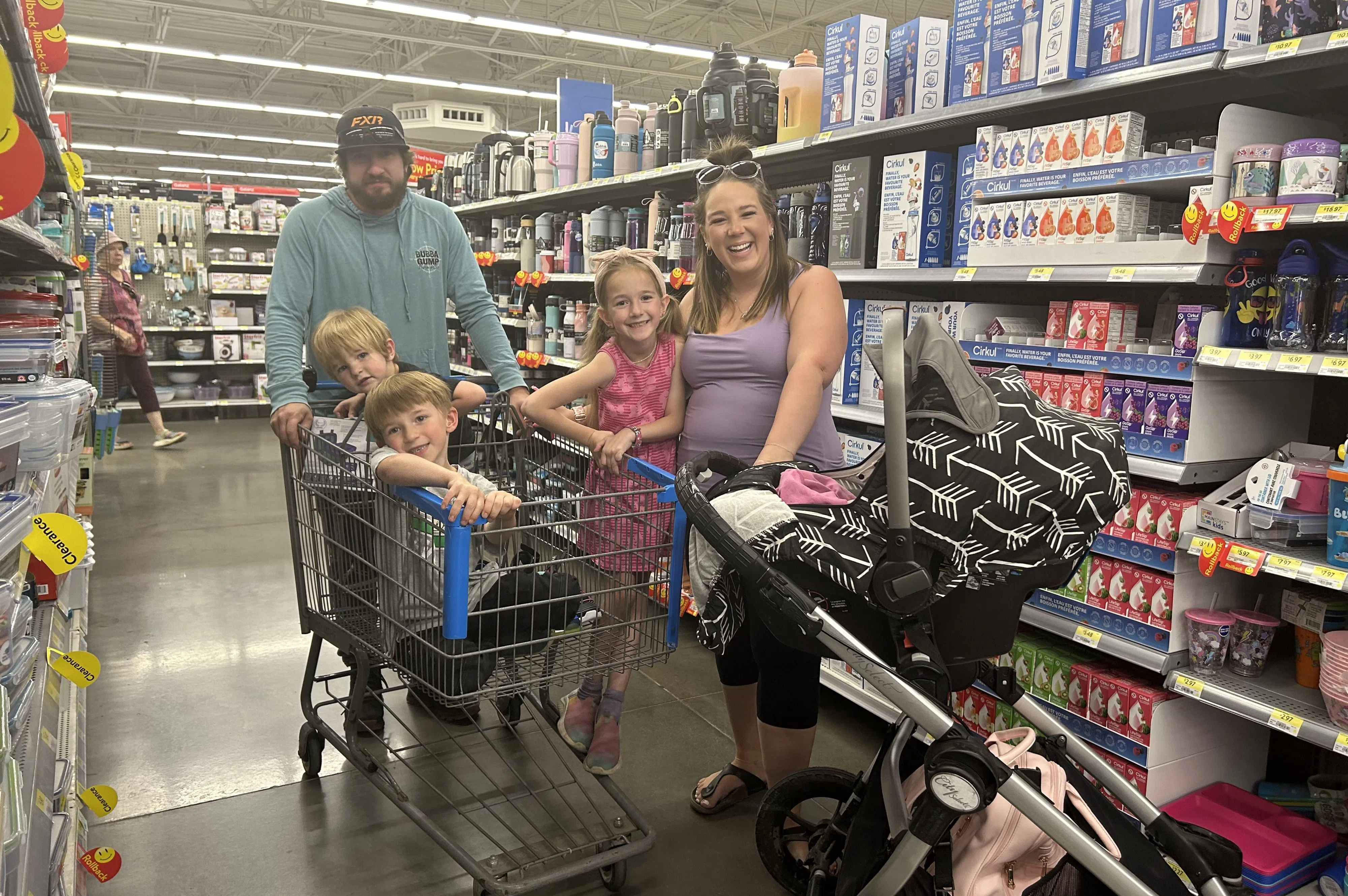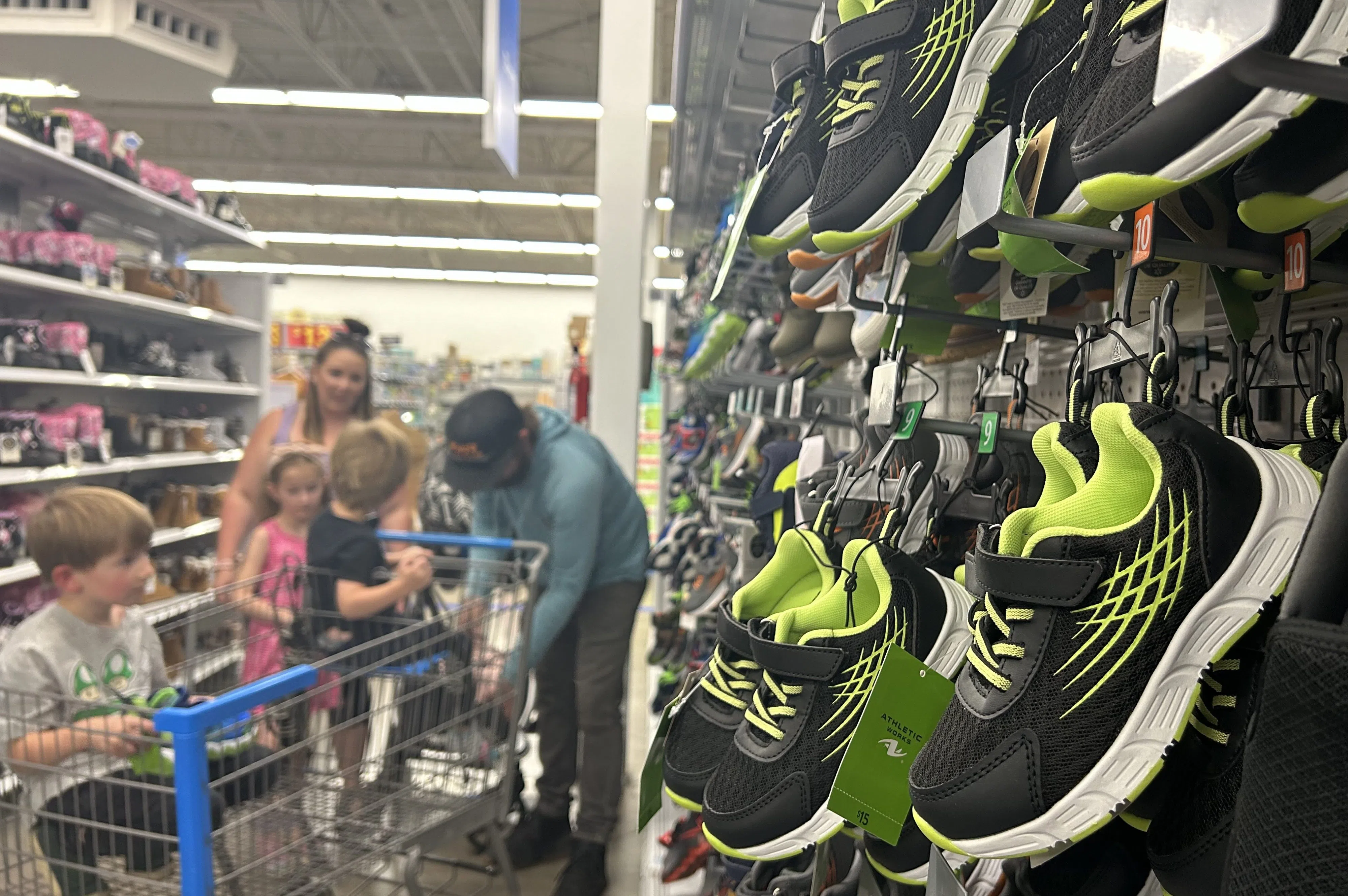The back-to-school scramble was on in full force last week.
Parents who put off shopping for school supplies were busy scouring nearly-empty shelves, sometimes reaching to the very back for the last few packages of dry-erase markers and glue sticks.
Ashlyn Redekop, a mother of four, said she’s one of the lucky parents in this province who can’t relate to the stress of shopping for school supplies.
Instead, her local school provides the majority of supplies for her children.
READ MORE:
- Saskatchewan blogger offers back-to-school tips to cut waste, money
- Rising cost of school supplies raises concerns for parents
- Free backpacks help lift back-to-school financial stress in Sask.
“It seems to work really well for our school. It’s so easy as a parent,” she said. “I don’t have to go store to store to buy specific things, because the school buys it for us.”

Redekop says the school’s bulk shopping and providing supplies supplies for students saves her family both time and money. “Because it’s all communal, I don’t have to label everything,” she said. (Brittany Caffet/650 CKOM)
Redekop’s children attend Lord Asquith School, a Kindergarten-to-Grade-12 school in Asquith, Sask. The school purchases supplies for students from Kindergarten to Grade 5 in bulk.
At the beginning of each school year, parents pay a $50 school supply fee, and the school then provides the vast majority of supplies the children require.
“They buy pretty much everything,” Redekop said. “I just have to make sure I have a backpack, Kleenex, running shoes, a water bottle and headphones.”

Calder Redekop will be heading into Grade 1 with some new shoes he picked out himself. Shoes are one of the few items his parents are required to provide for their elementary school aged children at Lord Asquith School. (Brittany Caffet/650 CKOM)
The school said bulk purchasing typically results in more affordable prices for families, and Redekop feels that paying only $50 is a bargain, based on what she hears from friends and family who purchase supplies annually.
Redekop’s mother volunteers to purchase and pack backpacks for students in need, and has seen a definite increase in the cost of supplies in recent years.
“If she buys the cheapest things and does not buy everything on the list, it’s over $120 per backpack,” she said.

Three of Ashlyn Redekop’s children will be attending Lord Asquith School this fall. She says the family has saved hundreds of dollars due to the school’s bulk purchasing of school supplies for students. (Brittany Caffet/650 CKOM)
Redekop said supplies like crayons are shared between all of the children, rather than being kept separately in their desks. She said the practice doesn’t only save her money — it also saves time.
“Because it’s all communal, I don’t have to label everything,” she said. “I still buy labels to label clothes, shoes and water bottles, but I don’t have to label every single marker and pencil crayon, because they all use it together.”
Redekop said providing each child with the same school supplies eliminates comparisons among the kids, creating a level playing field for learning.
“They will still have their clothes, shoes and backpacks… things like that. But as for the actual school supplies they are using, I feel it’s way more beneficial,” she said. “And if people are coming halfway through the year, they get to use those same school supplies. It’s not like they are coming in and they don’t have anything.”
Participation in bulk purchasing programs for school supplies is at the discretion of each individual school within the province.











